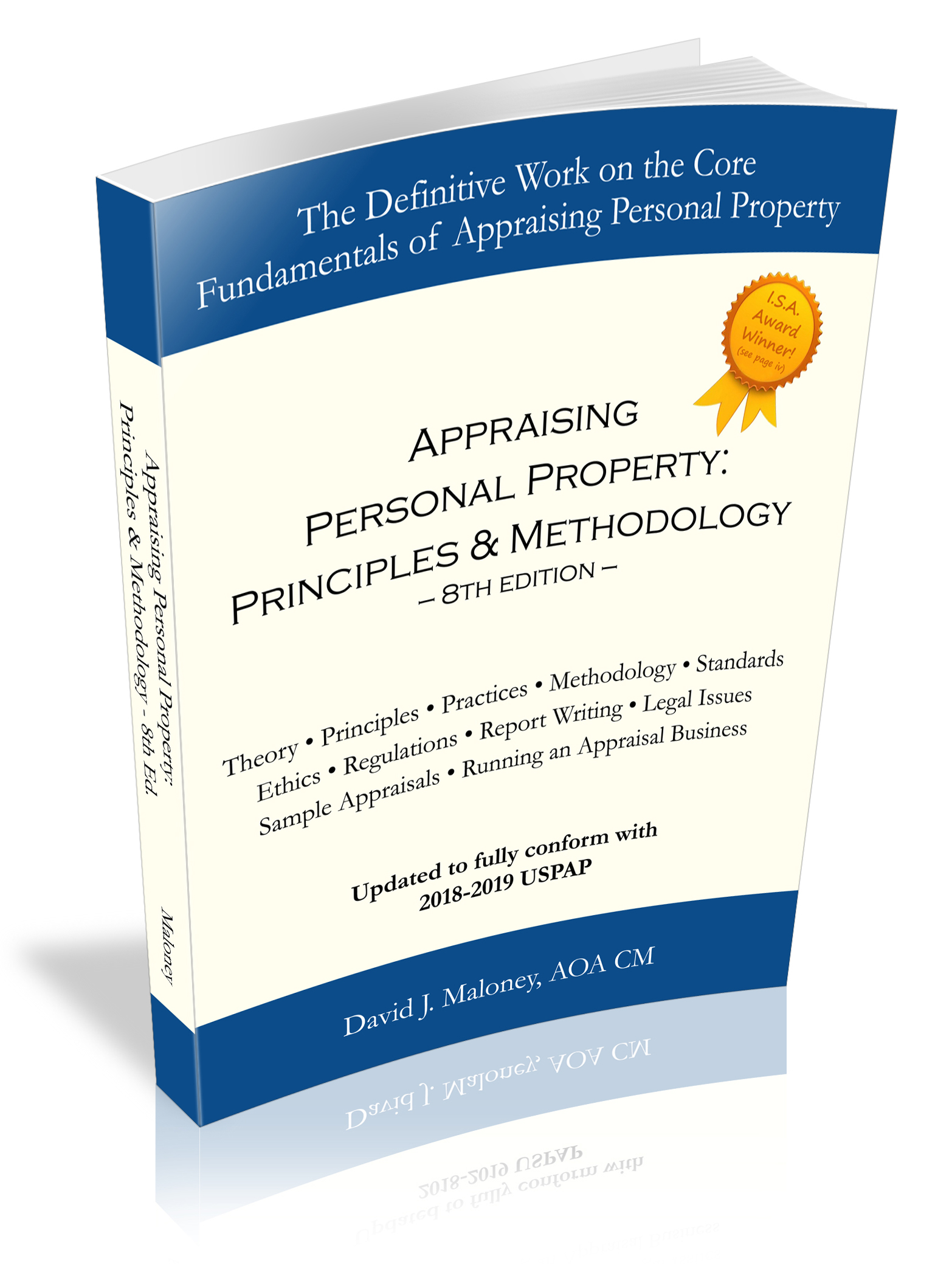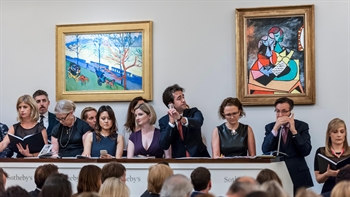Bloomberg posted an interesting article on Arthena (not to be confused with Athena Art Finance which I posted on yesterday) a start-up art investment group which will used data points and human insight for selecting works of art for as an investment. The article notes Arthena art fund has already partnered with Charles Schwab as a potential alternative investment platform for their investors. According to Bloomberg the for the time being only investors accredited by the Securities and Exchange Commission—generally individuals with annual incomes of $200,000 (or $300,000 for a couple), or $1 million in assets—can put money in an Arthena fund.
As we can see by the Bloomberg article, and has been pointed in the past in numerous AW posts, that new technologies and artificial intelligence are quickly moving into fine art investments and collecting, and that as appraisers we should not only be aware of these new platforms, but understand them as well.
To visit the Arthena website, click HERE.
Bloomberg reports
Source: BloombergHedge funds and some of the world’s biggest banks have embraced the predictive properties of machine learning to spot patterns and guide their investment decisions. Could this branch of artificial intelligence be used to divine the vagaries of the art market? A New York startup says it can.
Arthena analyzes hundreds of thousands of data points on works of art—artist, style, medium, size and so forth. Adding a touch of human insight, the company picks pieces it says will generate handsome returns for investors. Arthena currently manages several funds, ranging from low-risk ones that invest in modern art to higher-risk funds that buy works from emerging artists. The startup, which is backed by Foundation Capital, Beamonte Investments and Y Combinator, recently teamed up with brokerage Charles Schwab, which offers a suite of alternative investment offerings.
Valuing art is inherently subjective, and many experts are skeptical that it can be profitably bought and sold simply by the numbers. But Arthena co-founder and Chief Executive Officer Madelaine d’Angelo says AI could shed light on a market where deals are often done privately, lower the barriers to entry and help democratize art investing.
“Most people in the art world don’t like what we’re doing,” D’Angelo says, noting that she’s been accused of stealing the soul from art investing. “We’re not advocating that art shouldn't exist for art's sake, or that people should stop building collections, but we want to make it more widely available as an asset class and investment opportunity.”
Arthena’s pitch coincides with a surge of interest in art investing. Many investors are seeking to diversify their portfolios amid low bond yields and what some consider a frothy equities market. Sales at the big auction houses have jumped 18 percent in the first half of 2017, according to Deloitte’s latest Art & Finance report, and well-known works are fetching record prices. Jean-Michel Basquiat’s painting of a skull sold earlier this year for $110.5 million, 5,800 times what it was bought for 33 years earlier, according to Artprice, and a record for an American artist.
But the game has traditionally been the province of the uber-rich—like the mysterious buyer who just spent a record $450.3 million on Leonardo da Vinci’s `Salvator Mundi’ (up from a mere $127.5 million four years ago). Art funds are another way to get into the market, but these are usually sold to high net-worth individuals or family offices and managed by professional experts with connections in the art world. Arthena wants to make art investing accessible to more people and attract the next generation of art enthusiasts, including data-obsessed millennials.
“What you see with a lot of innovation happening in art and technology and finance, is that it’s the same repackaged product continued to be sold to the same pool” of investors without bringing in a wider audience, says D’Angelo, 30. “What we are asking is, what can we do to make that happen?”
D’Angelo, who has a master’s degree in museum studies from Harvard and worked at the Smithsonian, founded Arthena in 2013 with her brother Michael, 27, who studied computational and mathematical engineering at Stanford; he’s the chief technology officer. The company also has an office in San Francisco and is opening one in Luxembourg, the center of the art investing world.
Investing in art is a daunting prospect for most people because there’s not much available data. That’s changing thanks to the likes of Magnus, a startup with ambitions to catalogue the existence and price of every artwork and to make that information publicly available; another startup, Artsy, streams auctions on smartphones and tablets and lists inventory from a global network of galleries.
Arthena is talking to investors in their own language: math. D’Angelo says her team of data scientists uses the same rigorous data-driven approach that fund managers apply to any financial product. She declined to provide specifics, but art investment experts say AI is well suited to crunching a range of indicators to predict trends. Among them: prices at public auctions, the number of gallery or museum exhibits an artist has had, how often an artist’s name comes up in data bases or is mentioned on social media and works collectors already own of a given artist.
D’Angelo says her company can spot trends across more dimensions and a broader body of work than a team of human analysts or advisers could do (although art experts review the algorithms’ findings). Arthena targets works below $1 million and says pieces selling for less than $50,000 are the most liquid.
For now, only wealthy investors accredited by the Securities and Exchange Commission—generally individuals with annual incomes of $200,000 (or $300,000 for a couple), or $1 million in assets—can put money in an Arthena fund. The amount invested varies based on the fund and the manager’s needs but is typically about $10,000. The company says it has 10s of millions of dollars in commitments so far and hopes to generate 12.5 percent to 15.5 percent annual returns. Investors won’t know how they’ve done until the company sells its first artworks in a year or so.
Adam Goldstein, who co-founded the travel site Hipmunk, made a “small” investment in an Arthena fund. “To find an asset class that's this different; those don't come along very often,’’ he says. If Arthena succeeds, he adds, it could help make art a more widely accepted asset for a diversified portfolio. “People might ask why you don’t have any art in the same way they might ask why you don’t have any gold,” he says.
Data has already had a huge effect on the art market, lowering prices and improving transparency, says Evan Beard, an art services executive at U.S. Trust, the private bank owned by Bank of America Corp. But he’s skeptical that technology will totally supplant the way art has been bought and sold for centuries. An algorithm will never replace “going into old ladies’ living rooms and romancing them,” he says. “Selling a work of art still requires romance—even at the low end.’’
While the personal touch will probably never go away, Arthena’s data-first approach could appeal to a new generation of art aficionados. Phillip Ashley Klein, who runs Deloitte Consulting’s U.S. Art & Finance team, says a massive transfer of wealth is underway from boomers to millennials, who want a “more personal experience and more contextual transparency.”







